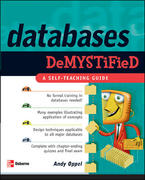Question
Consider converting y=(0.6875)10=(0.1011)2 with only L=2 bits reserved for the fractional part. In this case, both the basic and base expansion algorithm would yield (0.10)2=(0.5)10;
Consider converting y=(0.6875)10=(0.1011)2 with only L=2 bits reserved for the fractional part. In this case, both the basic and base expansion algorithm would yield (0.10)2=(0.5)10; however, the sum of the remaining powers of two indicate that the closest approximation should be (0.75)10=(0.11)2. Hence, the algorithm presented above does not round up based upon the value of the next binary digit associated with the next lower power of 2. Try to modify the approach presented by adding some steps that will inspect the next lower power of 2 and round the number accordingly.
Step by Step Solution
There are 3 Steps involved in it
Step: 1

Get Instant Access to Expert-Tailored Solutions
See step-by-step solutions with expert insights and AI powered tools for academic success
Step: 2

Step: 3

Ace Your Homework with AI
Get the answers you need in no time with our AI-driven, step-by-step assistance
Get Started


